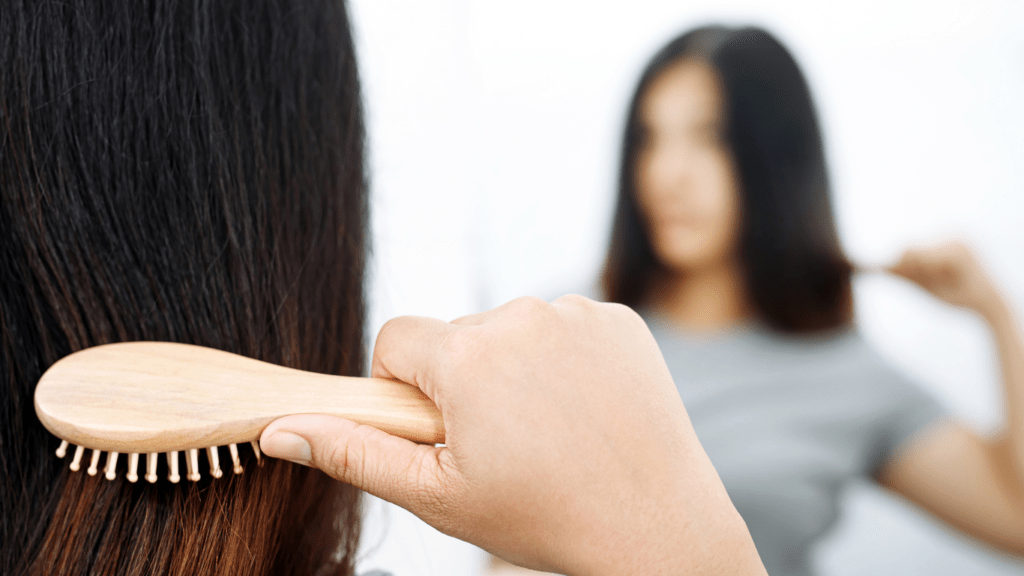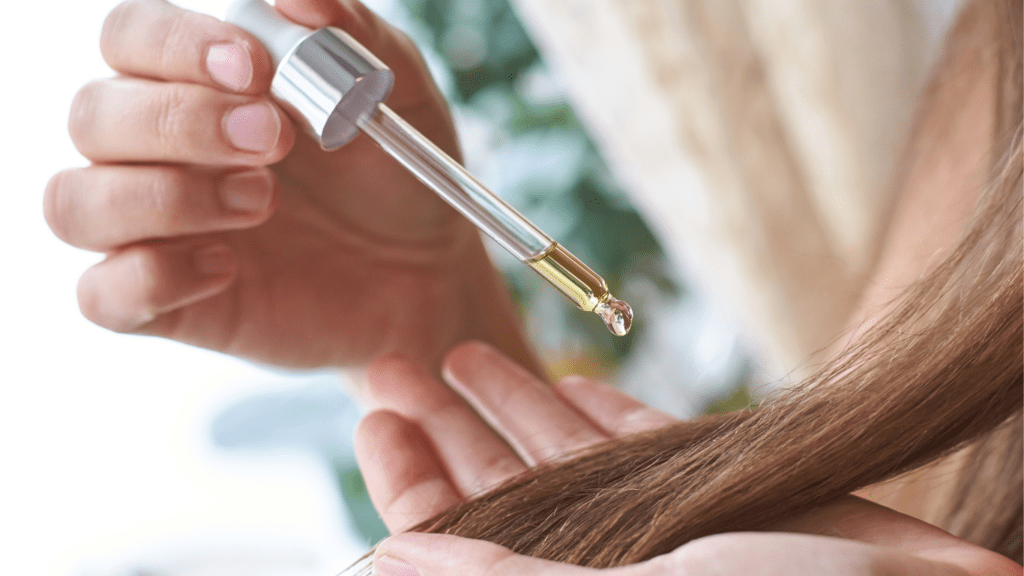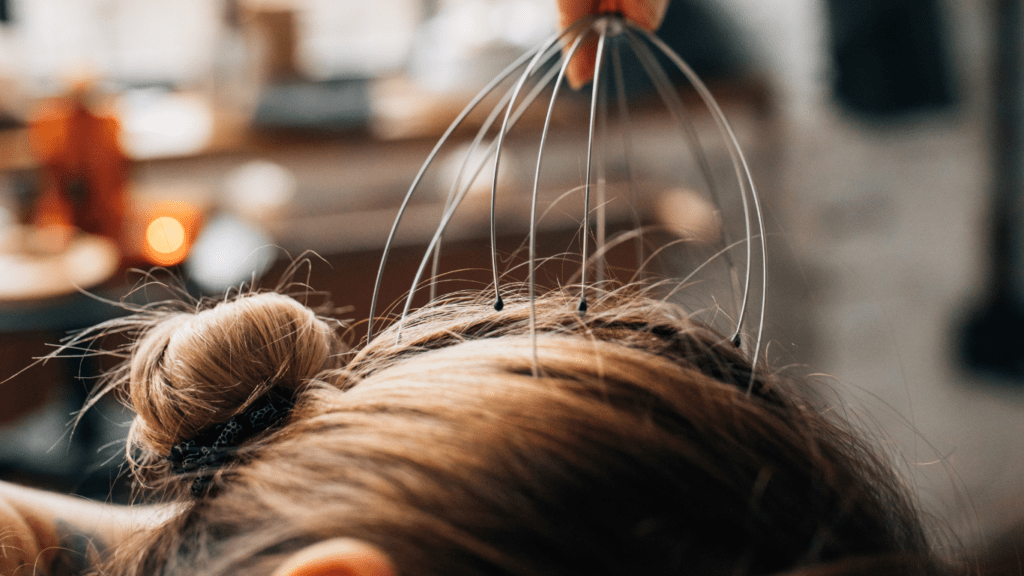Understanding Hair Types
Choosing the right hairbrush depends on knowing your hair type first. Different hair types require specific brushes to maintain their health and appearance.
Straight Hair
Straight hair usually lacks volume and can appear flat. To add volume, I recommend using a paddle brush or a vented brush. These brushes help distribute natural oils from the scalp while smoothing the hair. They reduce static and prevent frizz.
Wavy Hair
Wavy hair benefits from brushes that enhance its natural texture. A wide-tooth comb or a boar bristle brush works best. They gently detangle without breaking the wave pattern, keeping the waves intact and reducing frizz.
Curly Hair
Curly hair needs brushes that prevent breakage. I suggest using a wide-tooth comb or a detangling brush. These tools work through knots without pulling, ensuring the curls stay defined and healthy. Avoid using brushes on dry curly hair to prevent frizz.
Coily Hair
Coily hair, with its tight curls, requires special care. A denman brush or a wide-tooth comb is ideal for detangling. They glide through tight curls without causing breakage. Using these brushes on damp hair with a leave-in conditioner makes the process smoother.
Types Of Hairbrushes
Choosing the right hairbrush depends on your hair type and styling needs. Here are some popular types of hairbrushes.
Paddle Brushes
Paddle brushes work best for straight or long hair. These brushes have a broad, flat base that smooths and detangles hair quickly. With widely spaced bristles, paddle brushes reduce frizz and add shine. When blow-drying, the large surface area covers more hair, making the process faster.
Round Brushes
Round brushes suit those aiming for volume and curls. With various barrel sizes, they help create different styles. Larger barrels build volume, while smaller ones form tighter curls. When used with a blow-dryer, round brushes can add lift at the roots and create smooth waves.
Vent Brushes
Vent brushes are ideal for quick drying and adding volume. Designed with wide openings between the bristles, they allow air to circulate freely, speeding up the drying process. Vent brushes are great for all hair types, especially fine hair, as they lift the roots without much effort.
Boar Bristle Brushes
- Boar bristle brushes are perfect for distributing natural oils throughout the hair.
- These brushes are gentle, making them suitable for all hair types, particularly wavy and curly hair.
- Boar bristles reduce frizz and enhance shine.
- When used on dry hair, they help in evenly distributing oils from the scalp to the ends.
- Each brush type has unique benefits tailored to various hair needs and styling goals.
By understanding these differences, you can select the best hairbrush to achieve desired results.
Matching Hairbrushes To Hair Types

Selecting the right hairbrush is key for optimal hair health and styling. Match your brush to your hair type to ensure the best results.
Best Brushes For Straight Hair
Straight hair benefits from paddle brushes and boar bristle brushes. Paddle brushes detangle effortlessly, keep strands smooth, and minimize static. Boar bristle brushes, on the other hand, distribute natural oils from root to tip, enhancing shine and reducing frizz. For fine, straight hair, opt for a soft-bristle brush to prevent breakage.
Best Brushes For Wavy Hair
Wavy hair requires brushes that manage waves without disrupting their natural pattern. Wide-tooth combs detangle gently, while oval brushes with mixed bristles control frizz and smooth waves. Vent brushes reduce drying time, perfect for maintaining volume and bounce in wavy hair.
Best Brushes For Curly Hair
Curly hair needs brushes that define curls without causing frizz. Denman brushes, designed with staggered pins, promote curl clumping and definition. Detangling brushes with flexible bristles glide through curls without snagging. Use a wide-tooth comb on wet hair with conditioner for added protection against breakage.
Best Brushes For Coily Hair
Coily hair benefits from tools that preserve tight curls and prevent damage. Finger detangling works well for minimizing breakage. For brushing, select a brush with robust, widely spaced bristles, like a Tangle Teezer, designed to handle coily textures. A soft-bristle brush is ideal for smoothing edges and creating sleek styles without disturbing the curl pattern.
Tips For Maintaining Your Hairbrush
Proper maintenance extends the life of your hairbrush and ensures peak performance. Follow these tips to keep your brush in top condition.
Cleaning Techniques
Clean your hairbrush regularly; a dirty brush can transfer oils and product buildup to your hair. Use a comb to remove hair strands stuck in the bristles. For deeper cleaning, soak the brush in warm water mixed with a few drops of shampoo. Scrub the base and bristles using an old toothbrush, then rinse and let it air dry, bristle side down, to prevent water accumulation.
Replacement Frequency
Even with regular cleaning, hairbrushes wear out over time. Replace your brush every 6-12 months, depending on the material and usage. Bristles that bend or break and a handle that cracks indicate it’s time for a new brush. For natural bristle brushes, replace when the bristles start separating or losing their integrity.



 Founder & Hair Care Specialist
Edwardenn is the visionary force behind the website, with a deep passion for promoting healthy, beautiful hair. With years of experience in hair care and wellness, Edwardenn founded this platform to offer the latest hair care news, health tips, and expert advice. His mission is to empower individuals to understand and care for their hair, no matter their hair type or goals.
Founder & Hair Care Specialist
Edwardenn is the visionary force behind the website, with a deep passion for promoting healthy, beautiful hair. With years of experience in hair care and wellness, Edwardenn founded this platform to offer the latest hair care news, health tips, and expert advice. His mission is to empower individuals to understand and care for their hair, no matter their hair type or goals.

